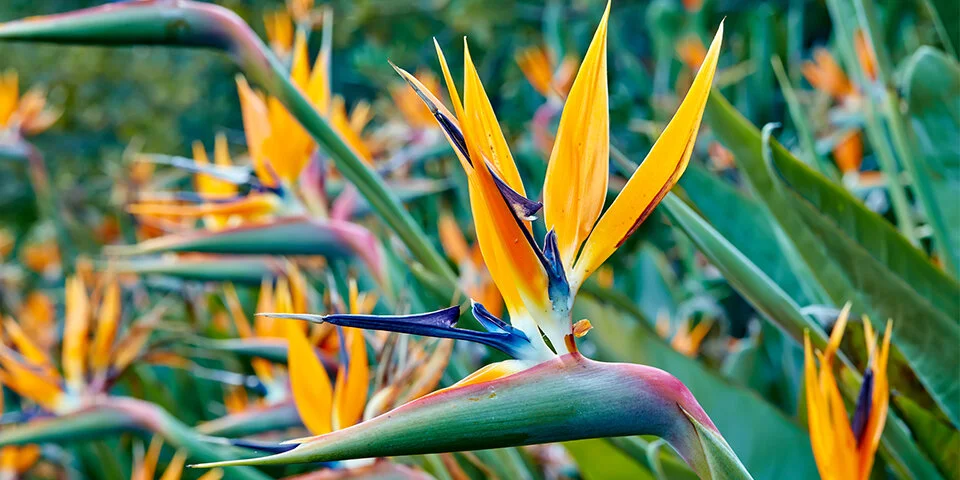The dried rhizome of Curcuma longa is the source of turmeric, the yellow powder that provides both colour and some of the flavour to many of the pungent dishes of South and Southeast Asia. It also has a long history of use for a variety of ailments in Chinese and Indian traditional medicine.
In its native tropical habitat Curcuma flourishes during the monsoon season and goes dormant when it is dry. It is winter hardy in areas as cold as USDA zone 7b and can be grown further north if the rhizomes are dug up during the winter. Most of the cultivars with more colourful flowers obtainable from specialty nurseries are hybrids of other species. The true flowers, which appear in the autumn, are relatively inconspicuous, the colour being provided by the bracts arranged along the flowering stem.
The yellow pigment and the alleged therapeutic effect of turmeric come from a group of compounds called curcuminoids, the most studied being curcumin. “The spice known as turmeric may be the most effective nutritional supplement in existence (HealthLine).” If the claims are to be believed, it represents a true Swiss army knife for the health care practitioner. A search on PubMed reveals the astounding amount of research effort devoted to it--6977 hits for turmeric and 20,149 for curcumin. There are 7155 for curcumin AND cancer and 1100 for curcumin AND diabetes. Similar searches show hundreds of hits for a score or more of unrelated human ailments. One review of curcumin in brain disorders reports benefits in Alzheimer’s disease, Parkinson’s, multiple sclerosis, Huntington’s, prion diseases, depression, and ageing, amongst others.
One of the most striking studies is a double-blind randomized controlled trial of curcumin versus placebo capsules given twice daily for nine months to a group of 240 prediabetics (Chuengsamarn S., et al, Curcumin extract for prevention of type 2 diabetes. Diabetes Care. 2012 Nov;35(11):2121-7). Sixteen per cent of the control group developed frank type 2 diabetes in the course of the study, whereas none of the curcumin-treated group did. The fasting blood glucose and measures of insulin resistance were significantly lower in the active treatment group. The study was published in 2012 in Diabetes Care, a high-impact, peer-reviewed journal. That’s pretty impressive, much better than was achieved with metformin in the large study carried out by the Diabetes Prevention Program (New England J Med. 2002;346(6):393-403).
The trouble with administering turmeric by mouth was explained in “The essential medicinal chemistry of curcumin” (Nelson KM et al. J Med Chem. 2017; 60:1620), which pointed out that curcumin and its closely related analogues are chemically unstable, poorly soluble in water, and poorly absorbed from the gastrointestinal tract. Perhaps this low bioavailability is a good thing because in vitro studies of curcumin have shown toxic effects on a variety of cell lines and enzyme systems.
The National Center for Complementary and Integrative Health, a branch of NIH, summarized its view of turmeric as follows: “Because the actions of turmeric and its components in people are complex and not well understood, no clear conclusions have been reached about whether these substances have benefits for health conditions.”
